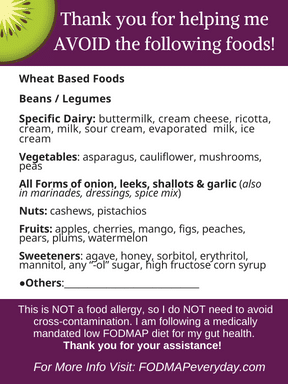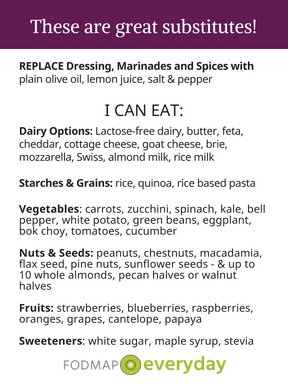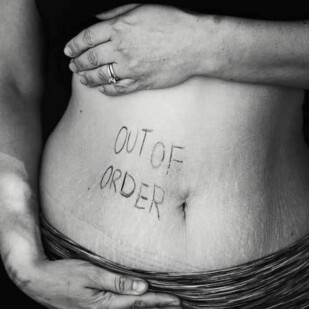Editor’s Note: Jordan Faith is a 17 year old living with IBS and she has learned a lot in the last year about what it is like to be a teenager, in school, navigating her age-group’s social scene – all while following the low FODMAP diet.
How to Make the Low FODMAP Diet Work for You – a Teen’s Perspective, is her first article. We have invited her to write for FODMAP Everyday® to speak from her perspective and personal experience. (Remember that your experiences might vary).
The low FODMAP diet changed her life and has inspired her to become a dietitian and explore gut health in higher education. Check out her introductory article, How The Low FODMAP Diet Changed My Life, where you can read about her journey. We think you will enjoy hearing from Jordan as much as we have.
How to Make the Low FODMAP Diet Work for You – a Teen’s Perspective
Let’s be honest, navigating the low FODMAP diet is like driving through a city you have never visited without a GPS. It’s difficult, annoying, you feel like you are getting nowhere and it makes you never want to leave your house again. Thankfully, that isn’t your only option.
You can take the train, walk, or ride a bike. Similarly, I have found many ways to make the low FODMAP diet manageable, even while I am at school. The idea is to have an arsenal of tools, tips and tricks in order to make the low FODMAP diet work for you.
I have been following the low FODMAP diet for over a year now; 365 days of learning how to navigate outings, events, meals, vacations, parties and the cafeteria. The Elimination phase was the most restrictive part, but once I learned my triggers it was easy for me to adjust.
Here is what I have learned.
Identify your Priorities
My top priority is eating food every 2 ½ to 3 hours because it decreases how much I bloat. This can be difficult in school. To adjust, I dropped my elective classes in Junior year. This way I was able to eat a low FODMAP breakfast, leave for school and then come home at 10:30 to eat a low FODMAP lunch. I realize this may not work for everyone.
Alternatively, asking to snack during class or to have access to the cafeteria microwave are reasonable requests that you can discuss with your teachers. If your school requires a doctor’s note, get one!
Make a Plan
I always need a strategy for the day. Writing out an agenda for the day helps me organize my information. Knowing what times of the day I want to eat has helped decrease my anxiety. Of course, often nothing really goes as planned, but at least I have a guide to refer to, which is better than winging it. (See our article on how to change a habit.)
Have a Backup
I pack an extra snack for when those plans change. Like city traffic, life can be crazy! I throw multiple granola bars, pretzels (gluten-free if you are sensitive to gluten) and trail mix in my purse, car, drawstring bags, and sports bags.
This way, I always have a snack on hand. And, make sure these are snacks that have you know are tried and true for your digestive system. (Check out our favorite snacks article!)
Caring Doesn’t Always Mean Sharing
I learned early on that I can’t always eat what my friends are eating. As delicious as that apple pie looks, I know the damage it will cause.
Talk It Out
Talking to my friends about the Elimination phase and my diet restrictions was extremely helpful. They were supportive of my new lifestyle, offering to pack a lunch with me instead of eating fast-food in front of me.
I am beyond grateful for this support. (Here is a handy downloadable and easy to read and share overview of the diet!)
Download Low FODMAP Diet Handout
Menu Education
Sticking to a strict diet when social events revolve around food is complicated. While eating out on the low fodmap diet can be tricky, speaking up (which unfortunately isn’t one of my strongest qualities) and asking a waiter for customized food such as just grilled chicken, no garlicky sauce or just a burger without a bun, changes the game.
Remember: restaurants want you to have a good experience so they are going to be as accommodating as possible. Also, I explore the restaurant menu beforehand and arrive with a plan A and plan B – better to be safe than sorry.
Additionally, on days I will be eating out, I make sure to be extra strict with my other meals for the day. This way, I enter the restaurant confident and ready to enjoy a meal with my friends.
FODMAP Everyday® has created a card for you to print out and hand to cafeteria and restaurant employees. It lists foods you are trying to avoid as well as suggested substitutions. It can be an ice breaker for the topic and they can take it back into the kitchen to show the cooks and chefs. Click on each to take you to the PDF download page.
Make the Cafeteria Your Friend
The restaurant/menu approach is useful in the school cafeteria as well. Speak up for yourself! If you can’t talk to the people behind the counter about your options, talk to your guidance counselor – and use the card above! No one can help you if they aren’t aware of your food sensitivities. The staff can show you the best way to hack their meal plans.
Now, if I forget to pack a lunch I have two options: eat my low FODMAP granola bar or choose from the cafeteria (or both if I am feeling extra hungry).
When choosing from the cafeteria I go for the simplest looking food. I opt for plain rice or salad with an olive oil dressing and grilled chicken (which may contain onion or garlic but the amount was never significant enough to worsen my symptoms; follow your body’s needs) and fresh, low FODMAP fruit.
Essentially, I stick to the five ingredients or less rule.
Most likely, the Chinese stir-fry has onion, garlic, and many other high FODMAP ingredients. However, a handful of french fries and grilled chicken leave less wiggle room for high FODMAP foods. (Check out our article on navigating the cafeteria at work or school.)
Pack It Yourself
While these are great alternatives, packing your own lunch is the safest option. It helps to have an idea of your favorite foods when meal prepping. Here are some of my favorite portable and pre-cooked food options:
• I love ground chicken or turkey. It cooks fast and can be seasoned any way you want.
• Potatoes and sweet potatoes take 5 minutes to cook in a microwave. Just stick with low FODMAP amounts for the sweet potatoes, but white potatoes have no detectable FODMAPs!
• Bananas and kiwi don’t even need to be put in a container or bag, just grab one on your way out (again watch your banana portions).
• Grapes have no detectable FODMAPs either and are a sweet low FODMAP treat.
• Hard-boiled eggs are also a simple option. Protein, portable and low FODMAP.
• Save time by pre-cooking oatmeal or brown rice.
• Carrots and cucumbers (again, no detectable FODMAPs for either) and bell peppers offer a nice crunchy snack.
• I am a sucker for peanut butter, which can be bought in portable containers. Add some gluten-free pretzels (if following a gluten-free diet) and you’ve got a delicious snack.
Eating out at school or trying to follow a meal plan is all about adapting. Maybe you can’t eat that apple pie anymore but that doesn’t mean dairy-free or lactose-free ice cream is off the table.
What are you favorite hacks for staying healthy AND happy on the low FODMAP diet? We’d love to hear from you below!
Be sure to check out Jordan’s article on DATING while dealing with IBS, too!












